Time's Arrows Wednesday, 3rd December 2003
Standing by the beck next to the remains of the old Denby Dale Turnpike road bridge (it's almost engulfed by the modern road) by Sainsburys supermarket, I draw this plant growing at the edge of the beck at a place where the stream appears, momentarily, between culverts. Waterton's Watercress
The stream looks murky today but in Waterton's time, and later, it became very polluted. At one stage, so our local history teacher told us, cows drinking from the beck were said to have died as a result. Ifs and ButtsI find myself thinking of events further back in time. The medieval town's archery butts, where men were obliged to practice with the longbow, were down here on the flat meadows by the beck (somewhere near the present Kentucky Friend Chicken, if I remember rightly). I have to call in at Manygates Further Education Centre to the south of the city. Overlooking the traces of medieval strip farming in Manygates Park* stands a Victorian memorial commerating Richard of York (1411-1460) , who was killed during, or executed soon after, the Battle of Wakefield which was fought on the fields - 'Wakefield Green' - between Sandal Castle and Wakefield Bridge on the 30th December 1460.
Tradition has it that Richard Plantagenet, Duke of York and Lord of the Manor of Wakefield, was beheaded at Manygates. A group of willows that grew there were know as the Duke of York Trees (shown in an engraving from Walks about Wakefield by W.S. Banks, 1871). And if Richard hadn't been killed at Manygates . . . would we have had:
Walking by the memorial, on my way to call in at the office, I look over the ridges and furrows of the park, deserted on this dull misty day, and think of that December day in 1460 when, standing on those same strips of ground, you might have heard the whistle of arrows and clash of battle. I imagine that Britain might have been a very different place if
it hadn't been for the way events unfolded here at Manygates. Correction*'The proper name for this open area is Castle Grove Park.' writes Gerrard Kittson of Sandal, 'Previously belonging to Castle Grove House which was where the housing development called Miller Avenue now exists. 'Manygates Park is the name of the grounds of Manygates House which lies to the west of the A61 Barnsley road at Haddingley Hill. Manygates House, until recentley part of Leeds University Campus, was for many years a Maternity Hospital.' That interests me because I was very nearly born at the hospital. My mum and dad turned up there but, this being the 'baby boom' years after the war, they were redirected to the Manygates Hospital annexe: Walton Hall. Related LinksThe Battle of Wakefield a painting, available as a print, by Graham Turner, who exhibits at www.studio88.co.uk Battle of Wakefield at J S Sargent's the Overtown Miscellany site which features Sandal and Walton
|

 Previous Page
Previous Page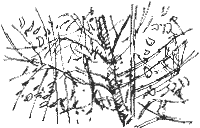
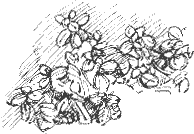 In
addition to the wildlife interest provided by the shrub beds, the
Cathedral Retail Park car parks have a watercourse, Balne
Beck, flowing through but mainly in culverts under
them.
In
addition to the wildlife interest provided by the shrub beds, the
Cathedral Retail Park car parks have a watercourse, Balne
Beck, flowing through but mainly in culverts under
them.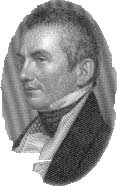 It
looks to me like watercress but, on its muddy bank
by those cloudy waters, I wouldn't want to risk eating any. Watercress
and toast was a regular breakfast of Charles Waterton,
naturalist and conservationist (1782-1865), Squire
of Walton Hall near Wakefield. He must have walked by this bridge
on many occasions: the Denby Dale Road Turnpike was authorised by
Act of Parliament in 1825 to link Wakefield and Barnsley with Manchester.
It
looks to me like watercress but, on its muddy bank
by those cloudy waters, I wouldn't want to risk eating any. Watercress
and toast was a regular breakfast of Charles Waterton,
naturalist and conservationist (1782-1865), Squire
of Walton Hall near Wakefield. He must have walked by this bridge
on many occasions: the Denby Dale Road Turnpike was authorised by
Act of Parliament in 1825 to link Wakefield and Barnsley with Manchester.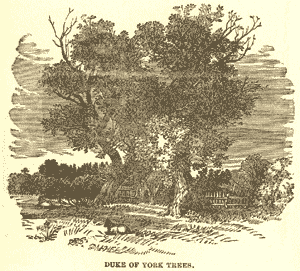
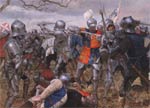 Charles
Waterton
Charles
Waterton